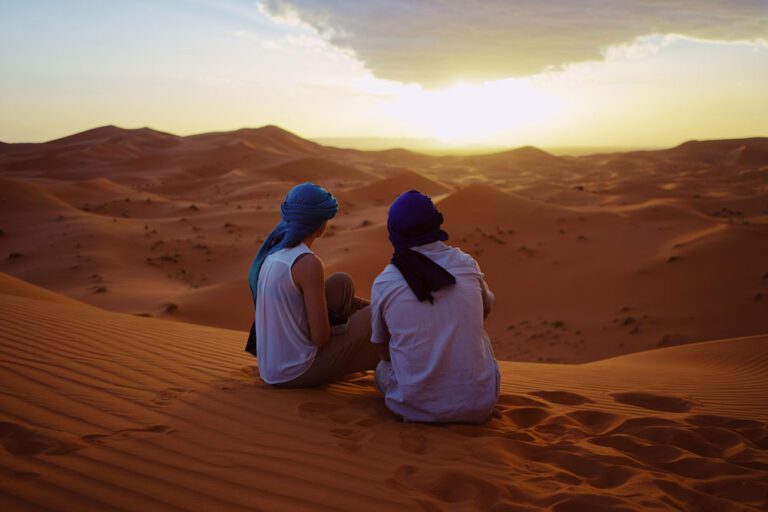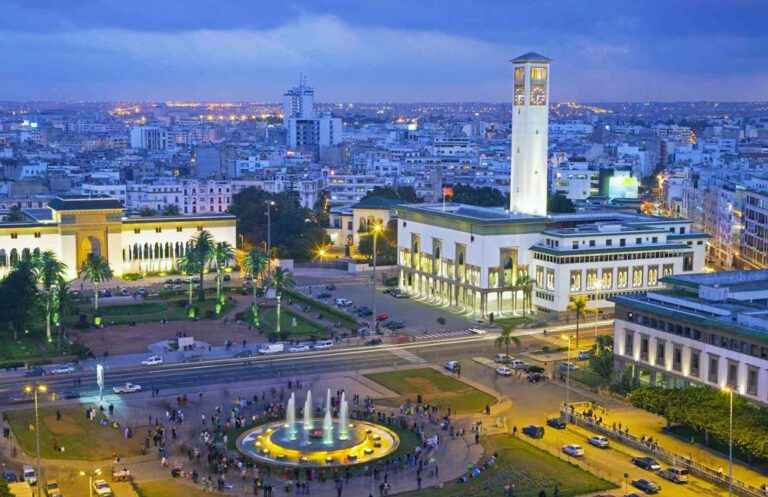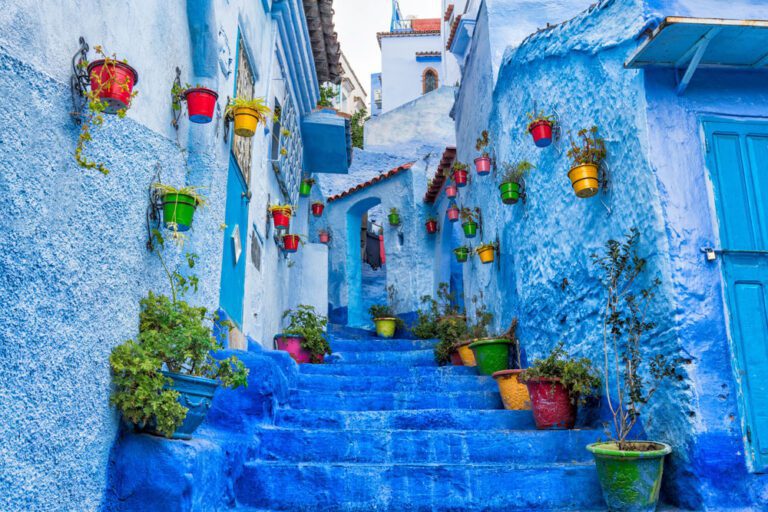From the Berbers to the Arabs: A Journey Through Morocco’s Fascinating Cultures
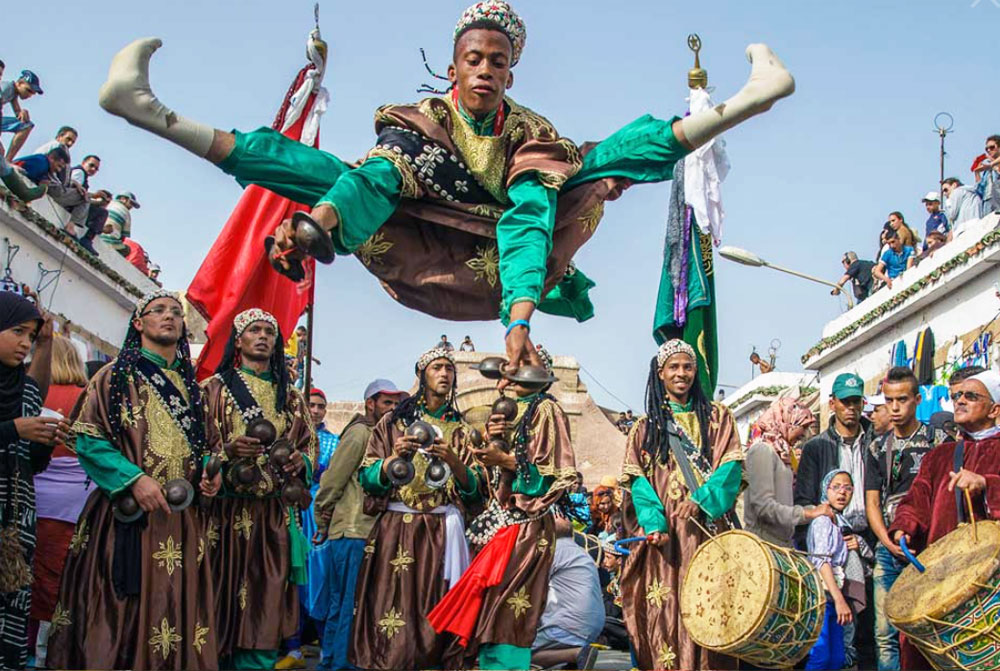
Morocco is a country of great diversity, where a rich and complex history has shaped its unique culture. From the Berbers, who were the original inhabitants of the region, to the Arab conquerors who arrived in the 7th century, Morocco has been shaped by a multitude of cultures and influences.
Today, this country is an enchanting blend of rich traditions, diverse languages, and various religions. It pulsates with a lively arts and music scene, tantalizes the taste buds with its delectable cuisine, and mesmerizes with its breathtaking natural landscapes.
In this article, we will take you on an enchanting journey through the captivating cultures of Morocco.
Prepare to delve into the rich heritage of the Berbers, immerse yourself in the vibrant Arab-Islamic influences, and discover the myriad of cultural elements that have been woven together to create this dynamic and kaleidoscopic nation. Get ready for an unforgettable exploration of Morocco’s cultural tapestry!
Whether you’re planning a trip to Morocco or simply eager to learn more about this captivating country, come along as we explore its vibrant and intricate history.
The Berber Culture
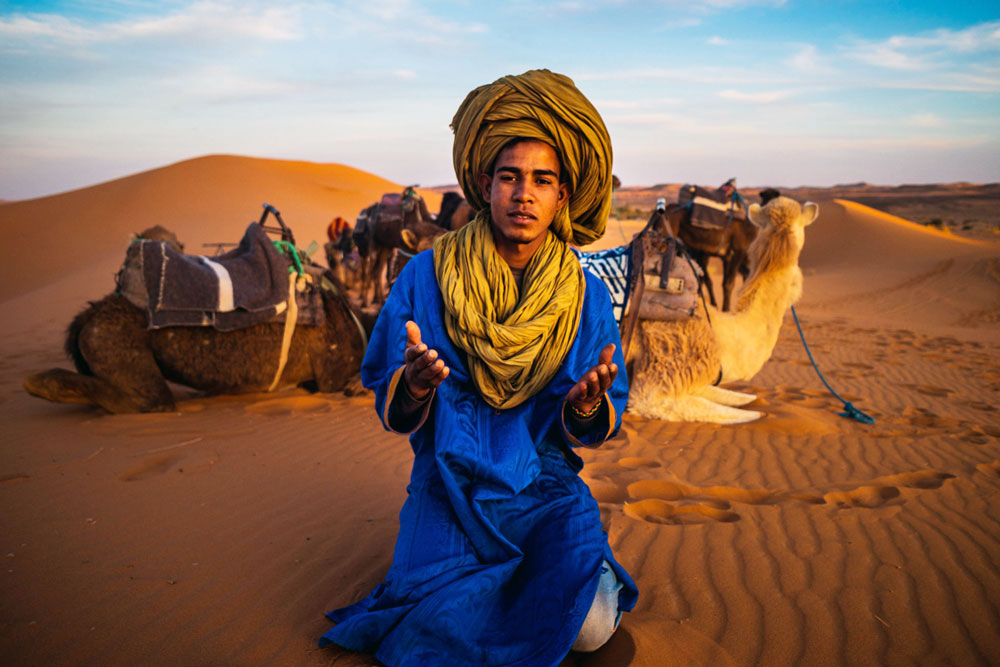
The Berber people, also known as Amazigh, are the original inhabitants of Morocco. Their history spans thousands of years, with a wealth of ancient tales and cultural heritage to explore.
The Berber culture is renowned for its vibrant sense of community, rich traditional values, and profound bond with the land. The Berbers have their very own language, which is still alive in certain regions of Morocco even today.
The customs and traditions of the Berber people are intricately intertwined with their rich heritage, forming a vibrant tapestry of cultural practices.
One remarkable aspect of the Berber culture is their profound tradition of storytelling, passed down through countless generations via oral history. Music plays a pivotal role as well, with instruments like the lute and drum holding significant cultural importance.
Another notable characteristic of the Berber people is their flair for vibrant textiles and exquisite embroidery, which grace their homes and garments with captivating beauty.
Despite enduring numerous challenges throughout history, the Berber community has admirably safeguarded its cultural identity and treasured traditions.
Today, there are many Berber communities throughout Morocco, and their unique culture continues to thrive.
The Arab Culture
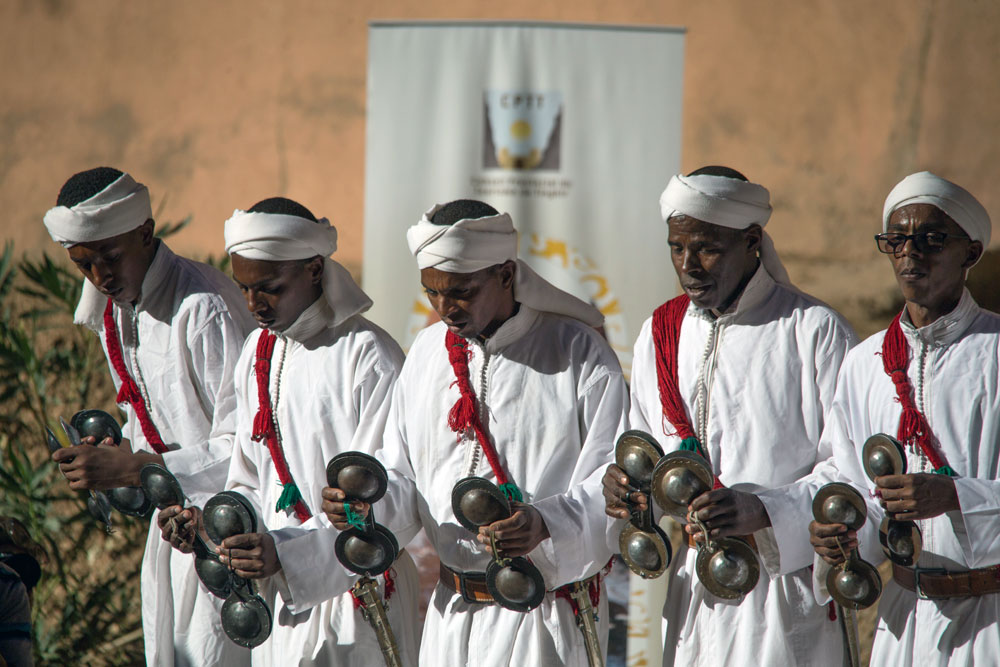
The Arab-Islamic influence in Morocco can be traced back to the 7th century when Arab conquerors arrived in the region. Over the centuries, this influence has become deeply ingrained in Moroccan culture, especially in the areas of religion and language.
Arabic is the official language of Morocco, and Islam is the dominant religion. The influence of Arabic can be seen not only in the language but also in the architecture, art, and literature of Morocco.
The Arab influence is also evident in the traditional dress of many Moroccans, with the kaftan being a popular garment for both men and women.
Morocco has a long and rich tradition of Islamic learning, and the country has produced many renowned scholars and thinkers over the centuries.
The Islamic influence can be seen in the many mosques and other religious buildings that dot the landscape of Morocco.
The Jewish Culture
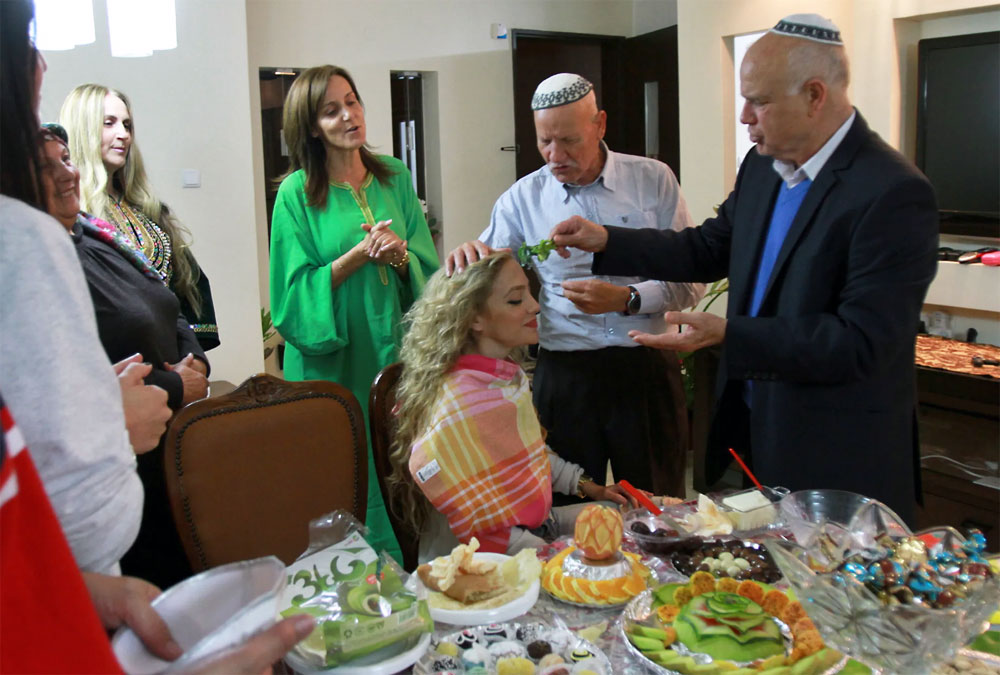
Morocco boasts a fascinating and vibrant Jewish culture that spans over two millennia, showcasing a profound historical legacy.
For more than 2,000 years, Jewish communities have flourished in this region. In fact, in the early 20th century, Morocco boasted one of the most substantial Jewish communities worldwide. With an impressive tally of over 250,000 Jewish individuals living within its borders, it held a prominent position among nations fostering Jewish populations.
The Jewish culture in Morocco is characterized by a rich heritage of music, art, and literature. The traditional music of the Jewish community is known for its haunting melodies and intricate rhythms. The Jewish community in Morocco has also produced many renowned poets and writers over the centuries.
Despite the many challenges they have faced over the centuries, the Jewish community in Morocco has managed to preserve its cultural identity and traditions.
Today, there are still Jewish communities in Morocco, and the government has recognized the importance of this cultural heritage.
The Andalusian Culture

The Andalusian culture in Morocco is a legacy of the Arab-Islamic influence that has shaped the country over the centuries.
Andalusia was a region of Spain that was ruled by Muslim conquerors from the 8th to the 15th century, and the influence of Andalusian culture can be seen throughout Morocco.
The Andalusian culture is characterized by its beautiful architecture, music, and cuisine. The architecture of Andalusia is known for its intricate tilework and beautiful courtyards, and this style can be seen in many buildings throughout Morocco.
The music of Andalusia is characterized by its haunting melodies and intricate rhythms, and it has become an important part of Moroccan culture. And the cuisine of Andalusia is known for its use of fresh ingredients and bold flavors, and it has had a significant influence on Moroccan cuisine.
The Gnawa Culture
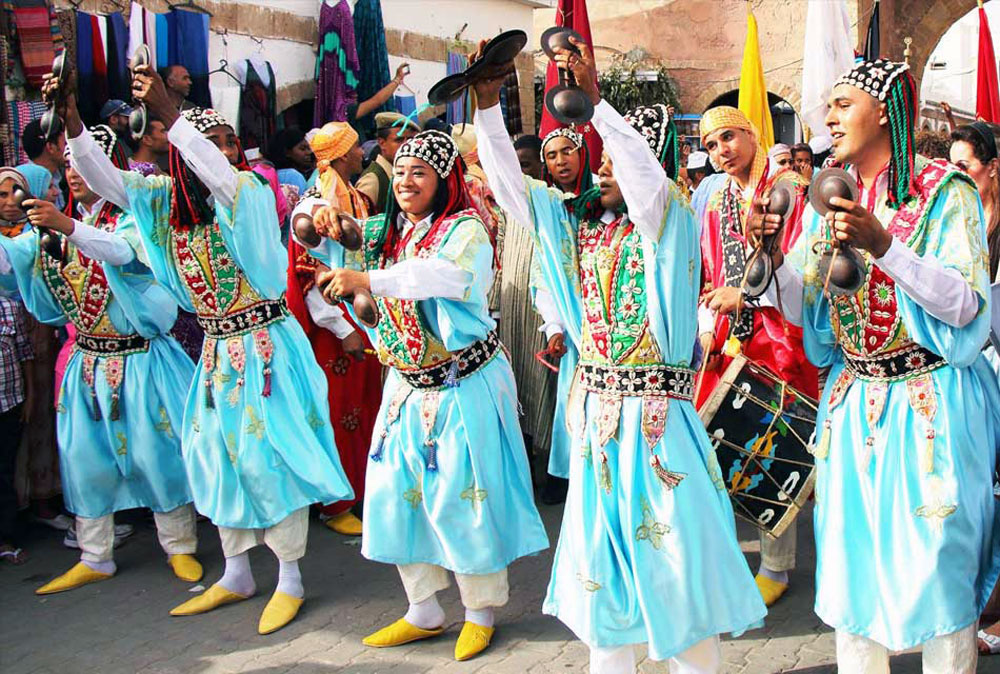
The Gnawa culture in Morocco is a unique blend of Islamic spirituality and African traditions. The Gnawa people are descendants of slaves who were brought to Morocco from sub-Saharan Africa, and their music and dance have become an important part of Moroccan culture.
The Gnawa music is characterized by its use of the guembri, a type of bass guitar, and the krakebs, metal castanets. The music is often accompanied by trance-inducing dance, and it is used in religious ceremonies to invoke the spirits.
The Gnawa culture has also had a significant influence on the wider Moroccan music scene, and many Moroccan musicians have incorporated Gnawa elements into their music.
The Tuareg Culture
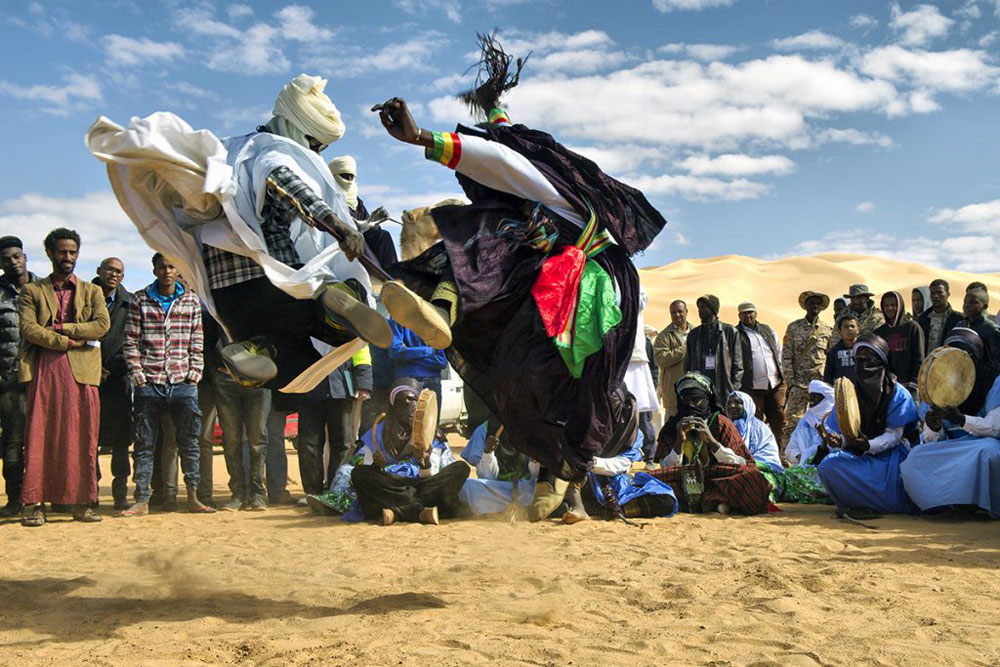
The Tuareg people are a nomadic group that has lived in the Sahara desert for centuries. They have a rich and unique culture that is characterized by their nomadic lifestyle, their traditional dress, and their distinctive music.
The Tuareg people are known for their beautiful jewelry and textiles, which are often made from silver and leather. Their traditional dress is characterized by the indigo-colored tagelmust, a type of headscarf that covers the face and protects against the harsh desert sun. And their music is characterized by the use of the tinde, a type of drum, and the imzad, a type of violin.
Despite the many challenges they have faced over the centuries, the Tuareg people have managed to preserve their cultural identity and traditions. Today, there are Tuareg communities throughout the Sahara desert, and their unique culture continues to thrive.
Cultural Festivals and Events in Morocco
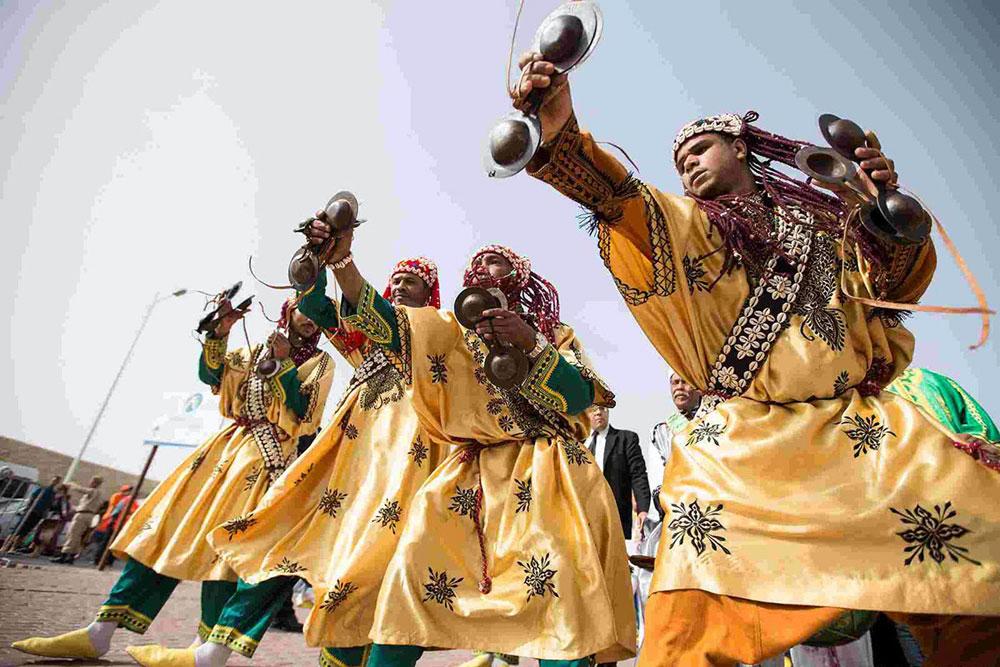
Morocco is a country of rich and vibrant culture, and there are many festivals and events that celebrate this diversity throughout the year. From the Fes Festival of World Sacred Music to the Marrakech International Film Festival, there is always something happening in Morocco.
The Fes Festival of World Sacred Music is a week-long event that celebrates the world’s religious traditions through music. The festival unites musicians and artists from across the globe, showcasing their talents amidst the breathtaking backdrop of the enchanting city of Fes.
The Marrakech International Film Festival is a prestigious event that showcases the best of Moroccan and international cinema. The festival brings together filmmakers and actors from all corners of the globe, making it a highly anticipated cultural extravaganza in Morocco.
Other cultural events in Morocco include the Moussem of Tan-Tan, a celebration of the nomadic culture of the Sahara desert, and the Imilchil Marriage Festival, a traditional Berber wedding ceremony that takes place in the High Atlas Mountains.
Conclusion – the beauty of Morocco’s cultural diversity
Morocco is an incredibly diverse country, brimming with a rich and intricate history that has profoundly influenced its exceptional culture. From the Berbers, who were the original inhabitants of the region, to the Arab conquerors who arrived in the 7th century, Morocco has been shaped by a multitude of cultures and influences.
Today, Morocco is a fascinating mix of traditions, languages, and religions, with a vibrant arts and music scene, delicious cuisine, and stunning natural landscapes. The beauty of Morocco’s cultural diversity is evident in the many festivals and events that celebrate this rich heritage throughout the year.
Whether you’re planning a trip to Morocco or just eager to delve deeper into the wonders of this captivating country, we genuinely hope that this exploration of Morocco’s rich cultures has instilled in you a profound admiration for the breathtaking beauty and captivating complexity of this vibrant nation.



